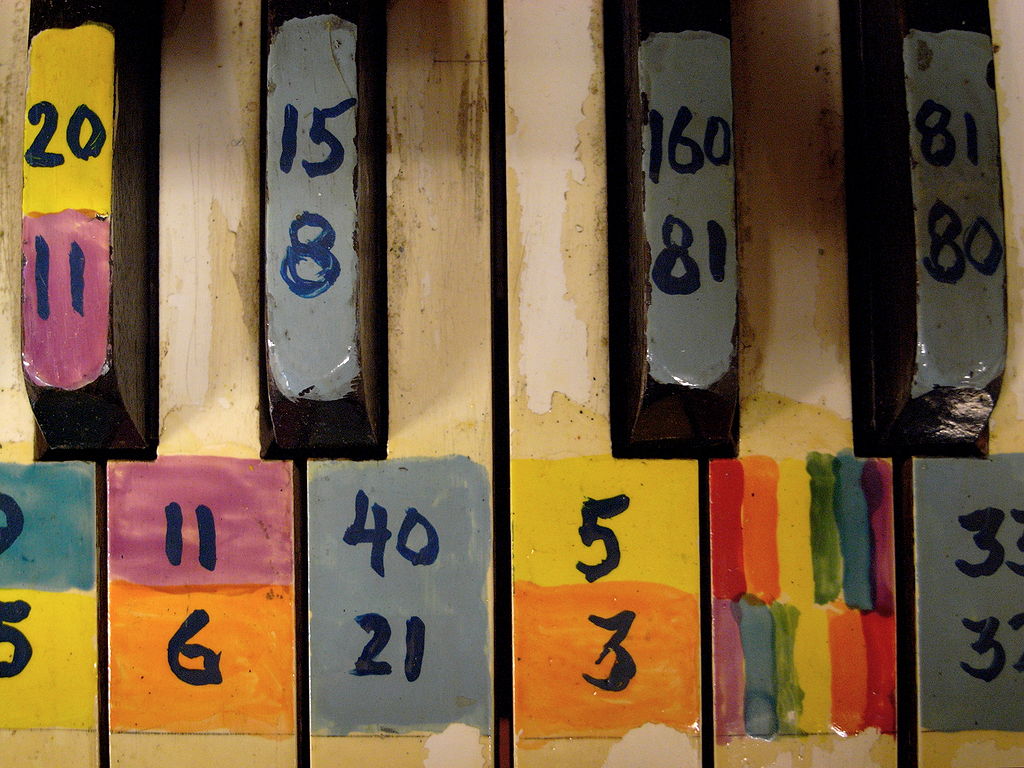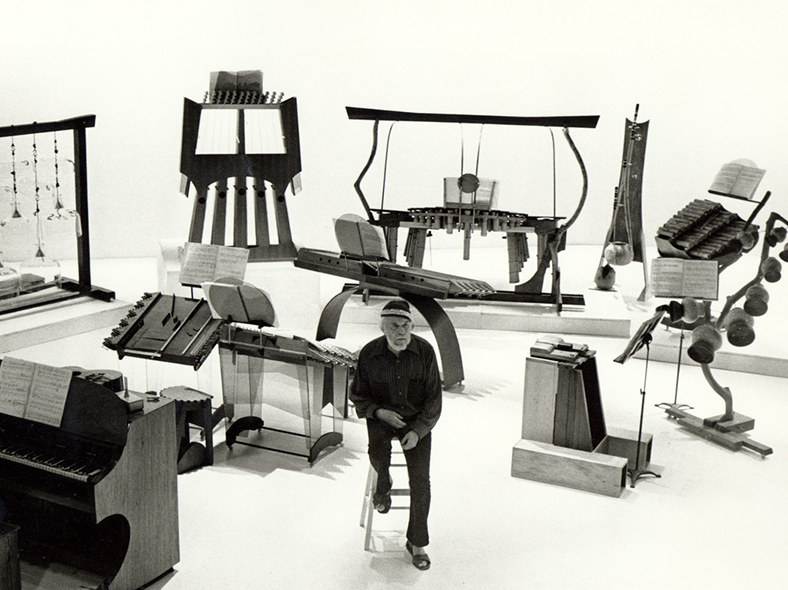Peter Lucas Hulen
- hulenp@wabash.edu
Interests — Microtonal Music
 I am interested in microtonal music. Microtonal music is made from notes 'between the cracks' on an ordinary instrument. If your eyes start to glaze over, just skip to the last paragraph. On a piano, each octave is divided into twelve equal semi-tones or half-steps. This system is called twelve-tone equal temperament (12tET). It represents a tempering of the 7-tone Pythagorean scale (or of a spiral of 12 just fifths), created by superimposing the 3:2 frequency intervals (just fifths) found among the natural harmonics of objects vibrating with a definable pitch. All the intervals in the Pythagorean scale are not equal (and the spiral of 12 just fifths doesn't meet up in a circle), so they are tempered (their tuning is changed slightly by lowering each fifth a couple of cents) to create twelve-tone equal temperament. Older systems of temperament 'averaged out' the Pythagorean scale and spiral of fifths in other ways. Temperament is a problem that musicians and theorists have confronted for centuries.
I am interested in microtonal music. Microtonal music is made from notes 'between the cracks' on an ordinary instrument. If your eyes start to glaze over, just skip to the last paragraph. On a piano, each octave is divided into twelve equal semi-tones or half-steps. This system is called twelve-tone equal temperament (12tET). It represents a tempering of the 7-tone Pythagorean scale (or of a spiral of 12 just fifths), created by superimposing the 3:2 frequency intervals (just fifths) found among the natural harmonics of objects vibrating with a definable pitch. All the intervals in the Pythagorean scale are not equal (and the spiral of 12 just fifths doesn't meet up in a circle), so they are tempered (their tuning is changed slightly by lowering each fifth a couple of cents) to create twelve-tone equal temperament. Older systems of temperament 'averaged out' the Pythagorean scale and spiral of fifths in other ways. Temperament is a problem that musicians and theorists have confronted for centuries.
'Microtonal' is a blanket term. It denotes any system of temperament, tuning or music that deviates from twelve-tone equal temperament. Notable composers of microtonal music include Harry Partch, Ivor Darreg, Ben Johnston, Lou Harrison, LaMonte Young, Terry Riley and Pauline Oliveros. Some microtonalists compose music for instruments 'detuned' according to Just Intonation, a system of scales that contain only intervals with fundamental frequencies in low-number or prime ratios (matching the harmonic series). Some Just Intonation systems involve alternate equal divisions of the octave e.g. 19tET and 53tET to name two. Some microtonal composers create music based on the theoretical non-division of the octave.
 Some composers make their own microtonal acoustic instruments. Harry Partch earned his place as a modern pioneer by building instruments on which to perform his music (Photo) and writing a book describing his system. The photo at the top of the page is a close-up of the keyboard of his 'chromelodeon'. An excerpt from an old movie shows him demonstrating that instrument (Video, below).
Some composers make their own microtonal acoustic instruments. Harry Partch earned his place as a modern pioneer by building instruments on which to perform his music (Photo) and writing a book describing his system. The photo at the top of the page is a close-up of the keyboard of his 'chromelodeon'. An excerpt from an old movie shows him demonstrating that instrument (Video, below).
I like the sound of microtonal music so much. I was trained to hear and apply the twelve pitch classes of 12-tone equal temperament, and nearly all the music I have ever performed as a volunteer or semi-professional has been tonal or modal. That's all good. As a composer, microtonal music opens up a strange alternative world of pitch-color that touches my sense of wonder.